With the spring break just around the corner and the sunny weather of recent weeks, we have to be extra alert to ticks. The danger of ticks is that they can carry diseases and a tick bite can transfer this disease. Lyme disease is the best known, but there are a number of other diseases that the tick is responsible for. In this article I explain how you can prevent a tick bite, what to do if a tick has bit you and what a tick actually is.
Tick activity
The generally good weather of recent weeks clearly shows that ticks are active again and unfortunately the trend of recent years is continuing. In recent years, the number of Lyme infections has increased again: from 25,000 in 2014 to 27,000 in 2017. Since 1994, the number of infections has even quadrupled. Most tick bites are registered Tekenrader.nl (Tick Radar) in the months of June and July, but the start of the ‘tick season’ is about the beginning of April. Last year, Tekenradar.nl registered about 8,500 tick bites, which is almost the same as the previous year. Incidentally, not every tick bite is registered bydrawrader.nl. The higher numbers above are a national total in which multiple sources are added together. Latest news is that research shows that children are bitten on the neck and head more often than adults. More on this later.
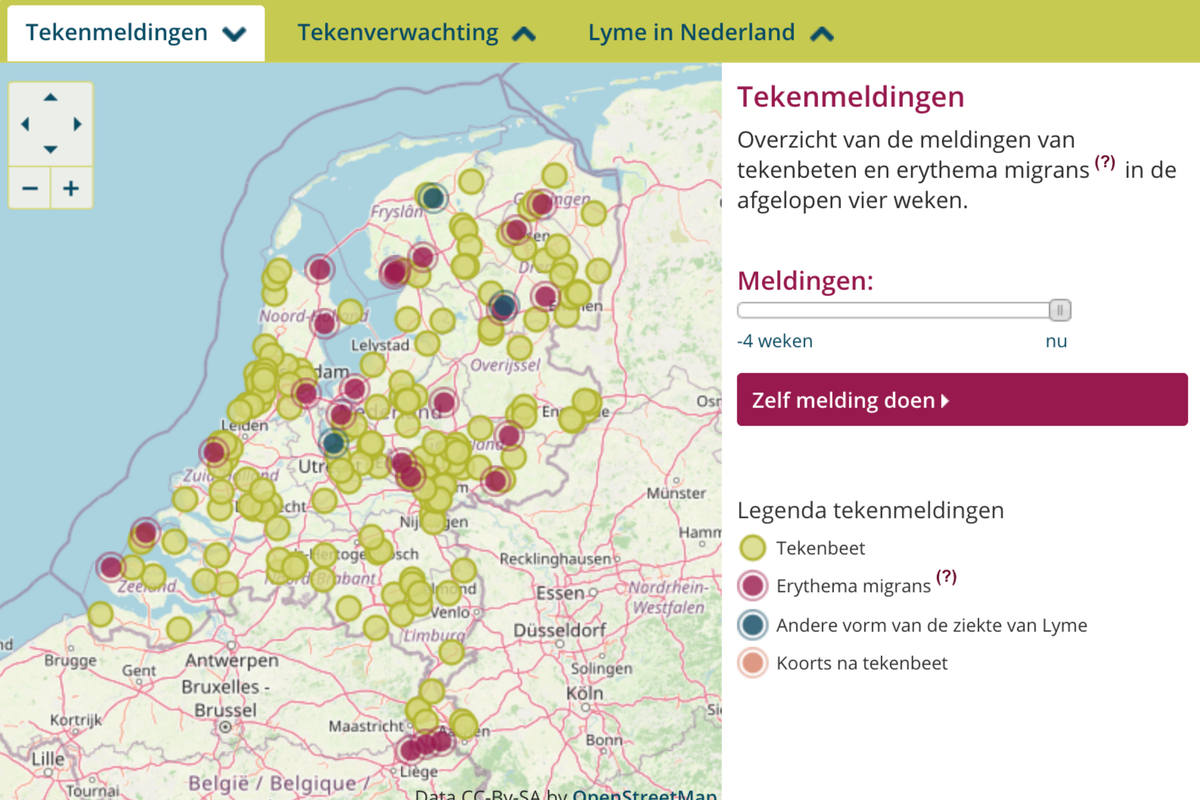
Where is the tick on our body?
Thanks to tekenradar.nl, researchers have an increasingly clear picture of where ticks bite on our body. Traditionally we always talk about the warm and humid places of our body. Think of the pubic area, armpits and buttock seam. Nevertheless, the registrations show that ticks are less choosy; ticks are much more likely to be found in other places on the body than those moist warm spots. In addition, it appears that in children the tick is found much more often on the head and neck; about 32% of all bites, while this is only 3% in adults. The legs are a popular place in adults: 55% of all bites against 25% in children. Bites around the pubic area are much less common: 7% in children and 9% in adults. These are the places that you should check regularly; also while playing outside.
What is a tick?
A tick most resembles a small spider. He lives on blood and is therefore dependent on blood donors. These are usually foxes, roe deer and sheep, but mainly small rodents such as mice. But a tick doesn’t discriminate, so if we cross his path… it doesn’t matter to him.
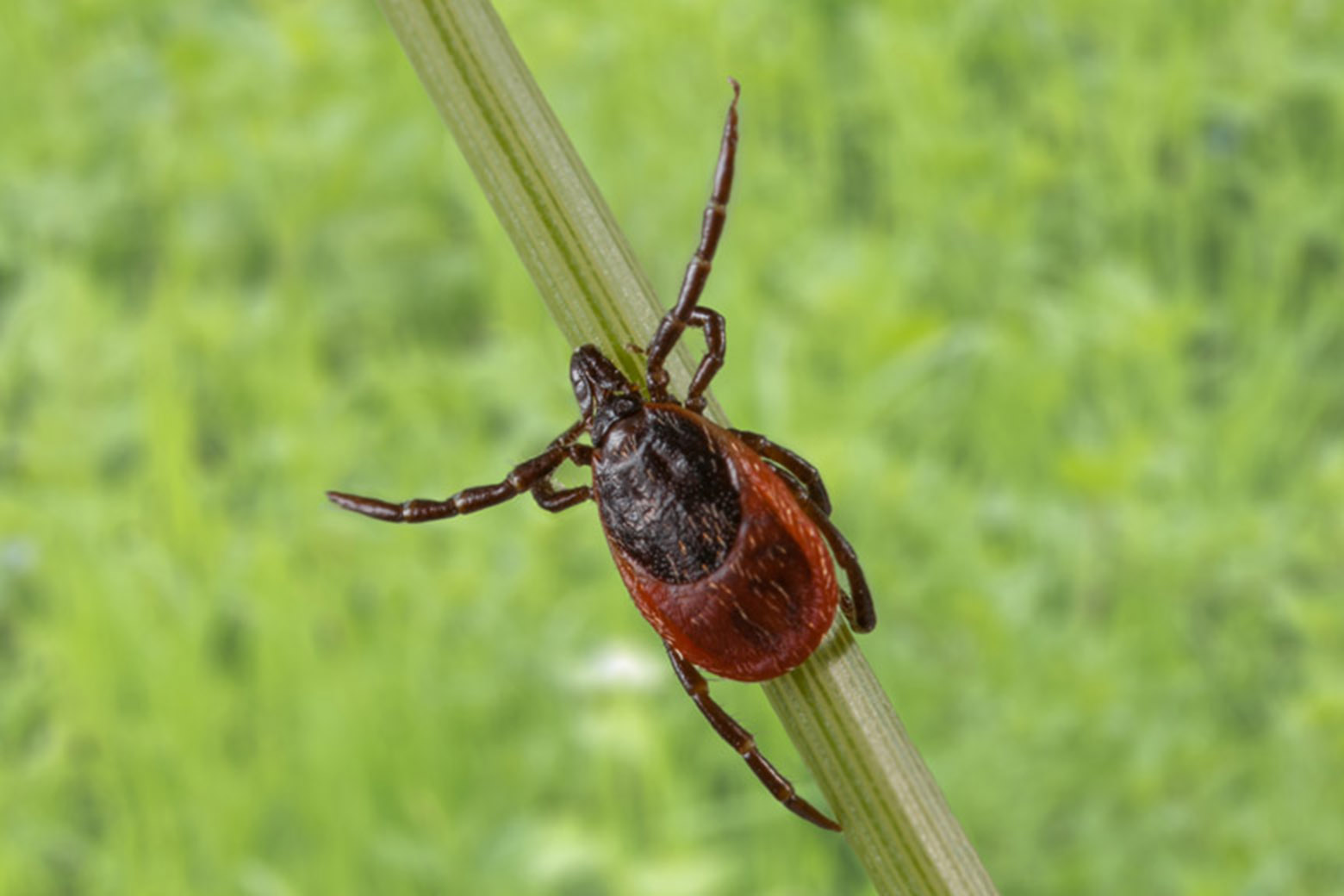
Where do ticks live?
The myth that the sign pounces on you from trees is indeed a myth. The tick actually lives at different levels in the vegetation, which in turn depends on the stage of life.
A tick has four stages of life. From an egg (1) it grows into a larva (2), then into a nymph (3) and finally into an adult tick (4). The larva is the first phase in which it searches for blood. A larva lives to a height of 20 cm. As a nymph he seeks the blood donor higher: up to 40 centimeters and as adults they reach 80 cm high. Finally, the females lay eggs again on the ground between leaves and everything starts again.

Ticks occur everywhere in the Netherlands. They like mixed deciduous forest with a rich undergrowth: grasses, low shrubs, ferns and a lot of dead leaves on the ground. They are significantly less present on open plains. Think of sand dunes, heaths, the floodplains and meadows. The provinces of Drenthe, Gelderland and Overijssel lead the way in terms of the number of infections caused by a tick bite. By the way, ticks also live in the backyard; 1 in 3 tick bites is contracted there.
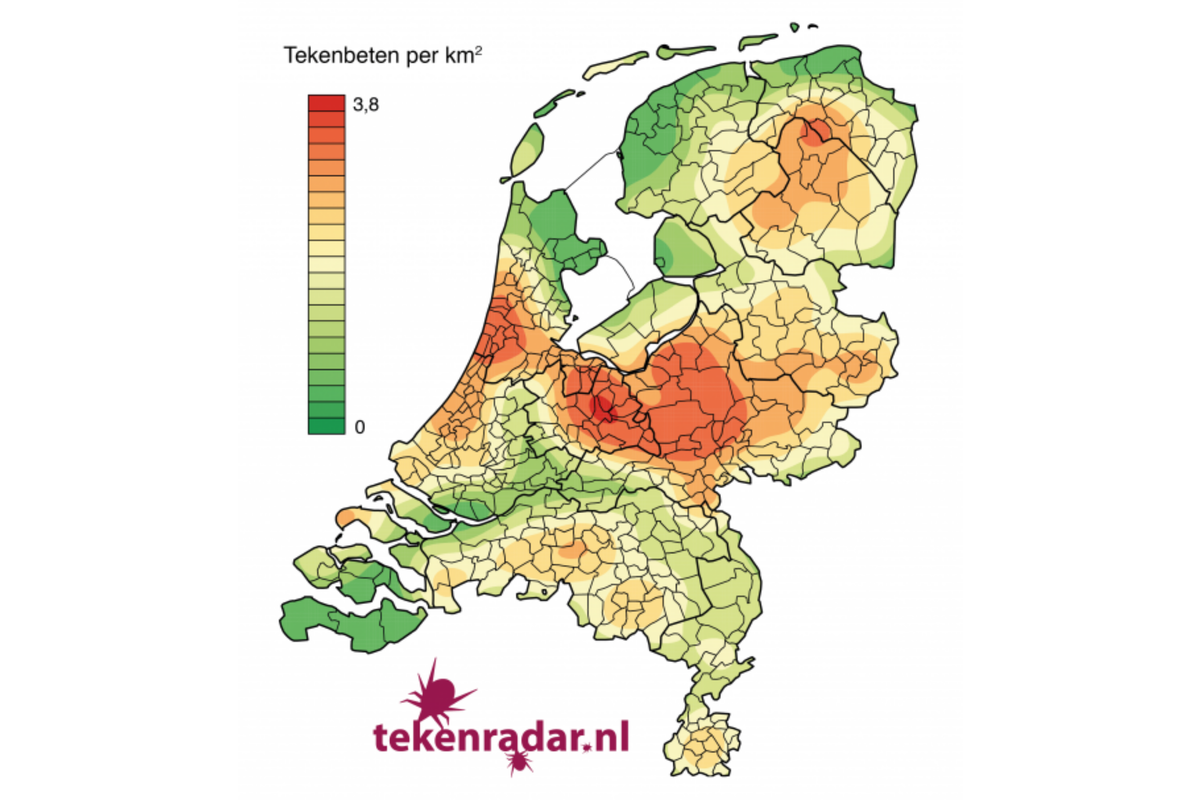
Lyme
In the Netherlands the most common tick is the sheep tick (Ixodes ricinus) and it can carry the Borrelia Burgdorferi bacteria – the cause of Lyme disease, officially Lyme borreliosis. The most recent data from the RIVM indicate that 1,300,000 people are bitten by a tick every year and that 1 in 5 ticks is a carrier of the Borrelia bacteria. The good news is that only 2% of people bitten will eventually develop Lyme disease. That is about 25,000 people per year and the vast majority of them recover after antibiotic treatment. Between 1000 to 2500 patients have complaints. Sometimes even with strongly disabling complaints.
Recognizing Lyme diseases
Lyme disease is fairly easy to recognize. In about 23,500 of the 25,000 people who have contracted Lyme, a marked red circle or spot (erythema migrans) developed after the bite. This is usually within three to ten days, but is also possible within three months. If you have a red circle, go to the doctor immediately!
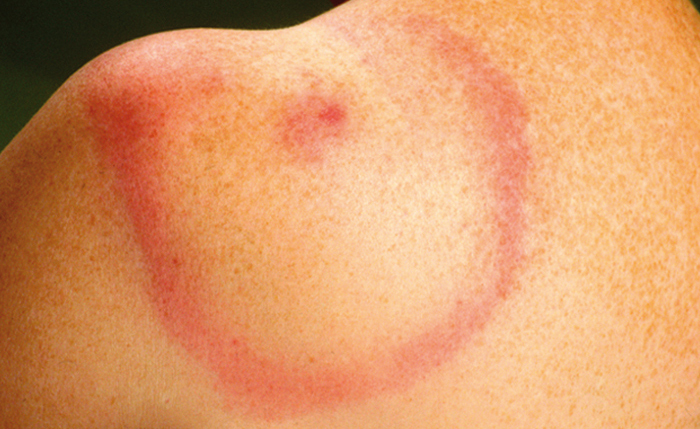
Tick encephalitis virus
Since 2016, there has been a new tick infection in the Netherlands: the tick encephalitis virus (TBE or FSME). This virus has been known for some time in Germany, Austria, Russia, Central Asia and Scandinavia and in the Netherlands it was first found in ticks on the Sallandse and Utrechtse Heuvelrug. In the Netherlands, only 1 infection is known and in Europe it concerns 2000 patients per year. This means that the spread of the tick encephalitis virus is still very limited. But the impact can be very great and that is why RIVM, among others, is researching the distribution.
Ticks abroad
Are you going on holiday abroad? Then it is important that you are aware of the risk of tick-borne encephalitis from a tick bite. Tick-borne encephalitis is also called frühsommermeningoenzephalitis (FSME) in the German language area and tick-borne encephalitis (TBE) in the Anglo-Saxon countries. Since an infection with tick-borne encephalitis can have serious consequences, it is important to recognize the clinical picture well.
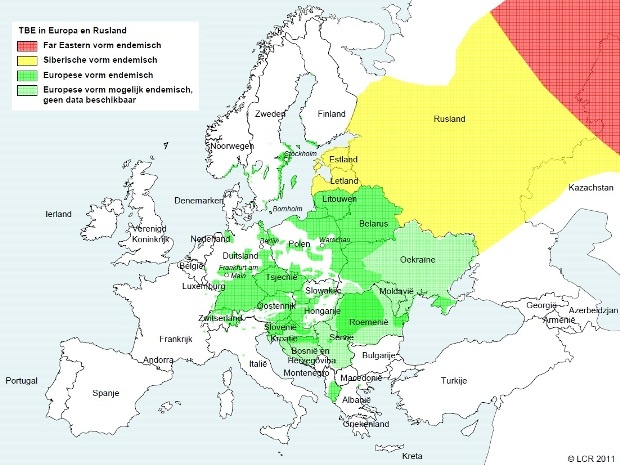
Recognizing tick-borne encephalitis virus
The clinical picture in an infection starts about a week to 14 days after the bite and is very similar to the flu: headache, muscle pain, fatigue and fever. This will take about a week. Now it is important to pay attention, because meningitis can develop. Severe headache is an indication. Meningitis is serious and is a reason for hospitalization. 1 to 2% of the patients have residual symptoms. A very small percentage die. There is no treatment for tick encephalitis.
Vaccination?
You can get vaccinated against infection with tick-borne encephalitis. Whether this is really necessary must be individually assessed by an expert traveler advisor, see the website of the LCR (National Coordination Center for Travel Advice).
In general, the rule of thumb is that if you stay in an area within Europe where the virus occurs for less than four weeks, it is sufficient to protect yourself well against ticks. If you are going camping and hiking for longer during the active tick season – April to November – in nature reserves in parts of Russia and Central Asia, then vaccination is advised. Vaccination consists of a series of three injections. For risk countries and areas: see the LCR website again.
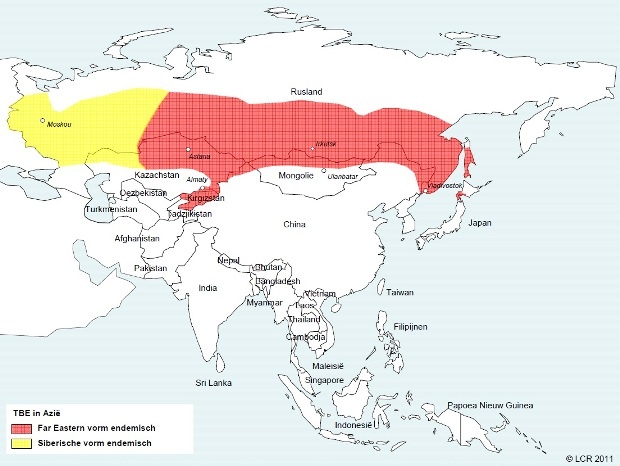
Tekenradar.nl
Tekenradar.nl and the app is a collaboration of De Natuurkalender, Wageningen University & Research and the RIVM (National Institute for Public Health and the Environment). Through long-term research, the Tekenradar knows fairly precisely when ticks are active. By linking this data to the weather forecast, Tekenradar can make a prediction of where and when ticks become active. So something to keep an eye on.
Tekenradar has another function too. If you have been bitten by a tick and you have the red circle or spot, you can report it on the Tekenradar. GPs also do this and this creates an up-to-date picture of tick bites.
For a tick prediction for the coming week, go to www.tekenradar.nl
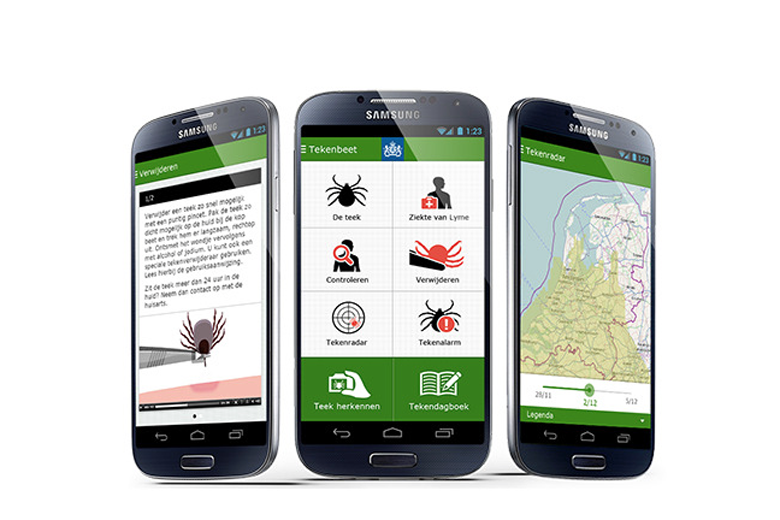
Prevention is better…
- From the above it should be clear that a tick is an animal to be taken seriously. Therefore 6 tips to avoid getting bitten.
- Walk on roads and trails. There are fewer ticks there.
- Wear long clothes and tuck the trouser legs into your socks.
- Wear light clothes to see your ticks better.
- In warm weather, apply DEET or a tick-repellent based on lemon eucalyptus (Citriodiol).
- Wear clothes that have been impregnated with Deet or Permitrin.
- Wash your clothes at 60 degrees at home.
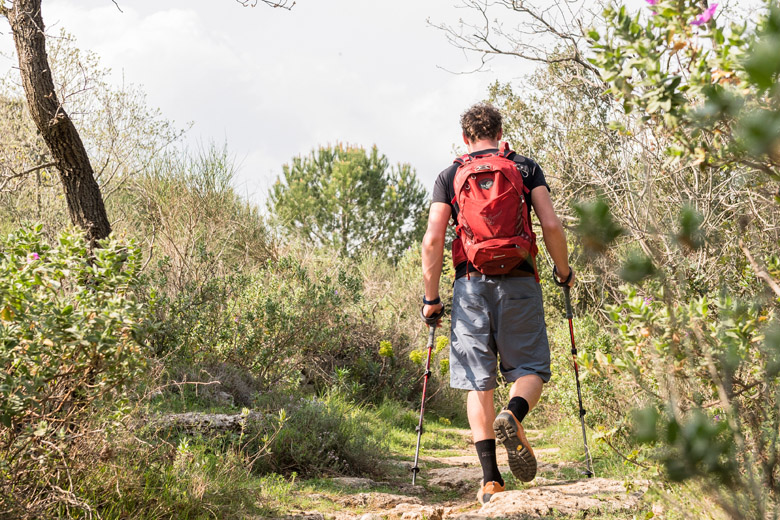
Help a tick!
- Despite all precautions, it is wise to assume that a tick has chosen you as the ideal blood donor when walking. Check yourself after every walk (or have yourself checked) and check the children too!
- Ticks do not distinguish in warm soft areas such as armpits, buttock seam, behind the ears and the groin area. Check everything!
- A mirror is useful for the invisible places.
- Found a tick? Remove it with pointed tweezers or tick tweezers, tick lasso or tweezers.
- Grab the tick by its ‘snout’ or head. As close to the skin as possible. In this way you prevent the tick from transmitting an infection during removal.
- Do not use flat-mouthed tweezers, a lit cigarette, iodine, or alcohol.
- Disinfect the bite wound with 70% alcohol or iodine tincture.
- Circle the spot where the tick was with a pen.
- Put the date of the bite in your diary. Handy for later.
- Is there a red circle or spot? Immediately to the doctor.
- If you become inexplicably ill later, remember that the tick could be the cause.
- The RIVM has made a good short video about ticks (Dutch spoken, sorry):
Useful sites about ticks
RIVM: www.rivm.nl
Kunststofradar.nl: www.tekenradar.nl
WUR Wageningen University & Research: www.wur.nl
